JuzaPhoto uses technical cookies and third-part cookies to provide the service and to make possible login, choice of background color and other settings (
click here for more info).
By continuing to browse the site you confirm that you have read your options regarding cookies and that you have read and accepted the
Terms of service and Privacy.
You can change in every moment your cookies preferences from the page
Cookie Preferences, that can be reached from every page of the website with the link that you find at the bottom of the page; you can also set your preferences directly here
Canon 300 f/4 IS vs Canon 300 f/2.8 IS
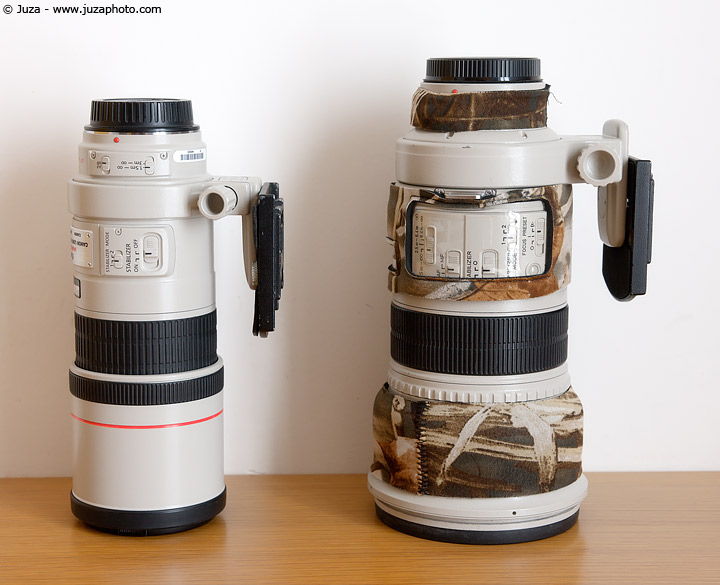
Canon 300 f/4 L IS USM and its big brother Canon 300 f/2.8 L IS USM. Both lenses without lens hood. Click here to enlarge.
Since early 2008, I own the Canon 300 2.8 L IS, that is considered one of the finest Canon lenses ever made. The Canon 300 f/4 is $2800 cheaper, much smaller and lighter: the 2.8 is really worth the price and weight difference? I have tested the two lenses side by side to answer to this question.
In terms of built quality, the two lenses are similar - sturdy and well built - except for weather sealing: the f/2.8 is sealed, while the f/4 has no weather sealing. Without the large hood, the f/2.8 is not much longer, but it is clearly wider, and it is about 1 kg heavier. Both lenses have "2 stops" image stabilization, even though the IS of the 2.8 is slightly more advanced (it can be kept active when the lens is mounted on a tripod, as far as the support is not too stable).
Both have a fast ultrasonic AF motor, with full time manual focus. Without teleconverters, both the f/4 and the f/2.8 are very fast, even though the f/2.8 is a little better. With the 1.4x TC, the f/2.8 has a more marked advantage, and with the 2x TC the difference is huge: on prosumer SLRs the f/4 does not even work in AF with the 2x, and on 1 series SLRs it is extremely slower than the f/2.8 + 2x. Other than that, the f/4 has a two steps focus limiter, while the f/2.8 has a three steps limiter, that gives more choices (and in some situations it can make a big difference).
Specifications
����| � | � �Canon 300 f/4 | � �Canon 300 f/2.8 L IS USM |
�
| �Focal length | � �300 mm | � �300 mm |
�
| �Construction | � �15 elements/11 groups | � �17 elements/13 groups |
�
| �Macro Ratio | � �0.25x (1:4) | � �0.13x (1:8) |
�
| �Max Aperture | � �f/4 | � �f/2.8 |
�
| �Stabilization | � �Yes | � �Yes |
�
| �Autofocus | � �Ultrasonic motor | � �Ultrasonic motor |
�
| �Closest Focus | � �1.5 meters | � �2.5 meters |
�
| �Dimensions | � �90 x 221 mm | � �128 x 252 mm |
�
| �Weight | � �1190 g | � �2550 g |
�
| �Weather sealing | � �No | � �Yes |
�
| �Price | � �$ 1200 | � �$ 4000 |
�
| �Announced | � �1997 | � �1999� |
�
Image quality comparison
I have tested the lenses on my Canon 1DsIII (21 megapixel, FF). The lenses was mounted on tripod; I have used mirror lock up and self timer. The following images are 100% crop from the center of the unprocessed RAW file.
300mm:
����| � | � �Canon 300 f/4 | � �Canon 300 f/2.8 |
�
| �f/2.8 | � �Not available (the widest aperture is f/4) | � �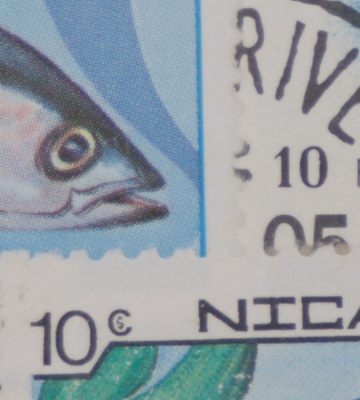 |
�
| �f/4 | � �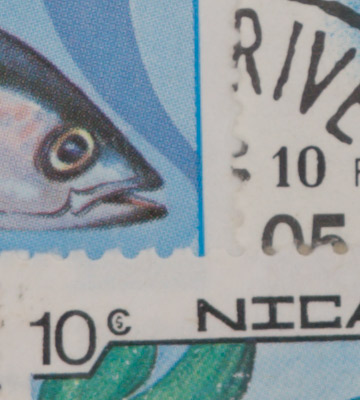 | � �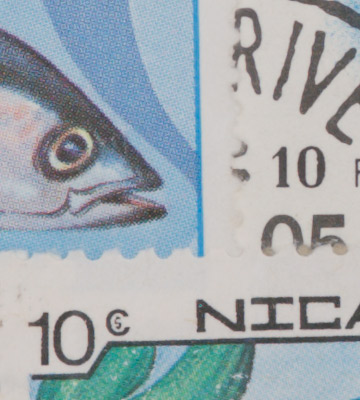 |
�
| �f/5.6 | � �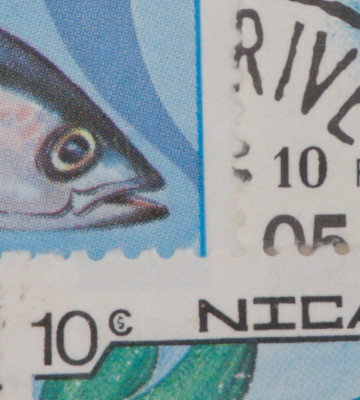 | � �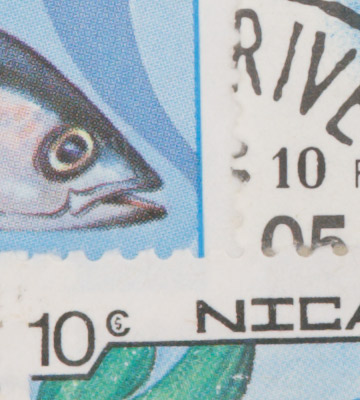 | �
�
Without teleconverters, both lenses offers excellent image quality, even though the 300 f/2.8 has an extraordinary sharpness that the 300 f/4 never reaches.
420mm (300 + Canon 1.4x TC):
����| � | � �Canon 300 f/4 | � �Canon 300 f/2.8 |
�
| �f/4 | � �Not available (the widest aperture is f/5.6) | � �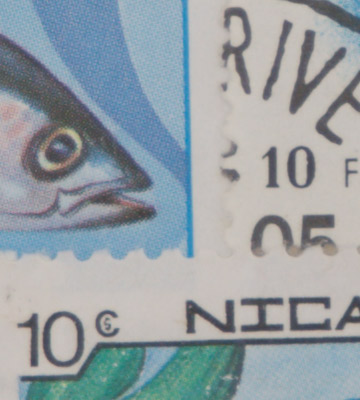 |
�
| �f/5.6 | � �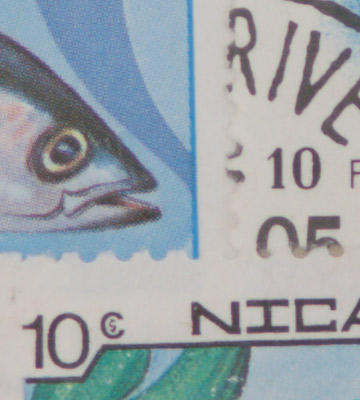 | � �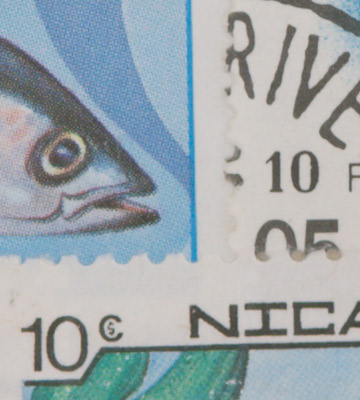 |
�
| �f/8 | � �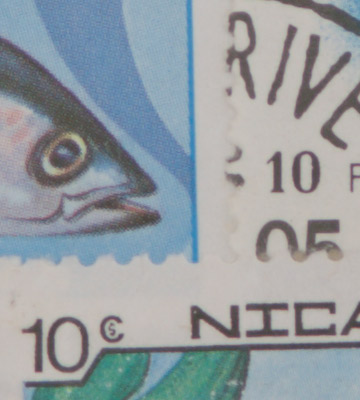 | � �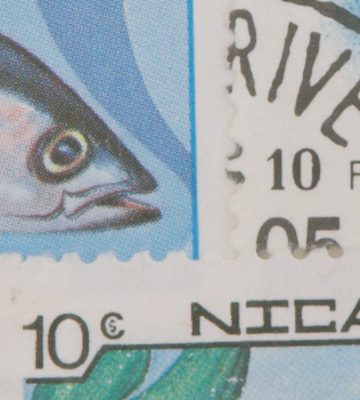 | �
�
At f/4, the 300 2.8 + 1.4x gives about the same image quality of the 300 f/4 + 1.4 at f/5.6; at comparable apertures, instead, the 300 shows better sharpness and contrast.
600mm (300 + Canon 2.0x TC):
����| � | � �Canon 300 f/4 | � �Canon 300 f/2.8 |
�
| �f/5.6 | � �Not available (the widest aperture is f/8) | � �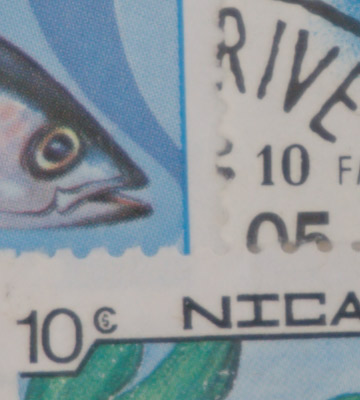 |
�
| �f/8 | � �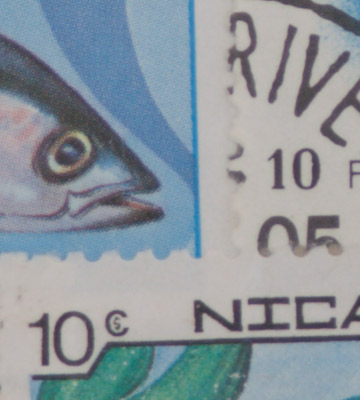 | � � |
�
| �f/11 | � �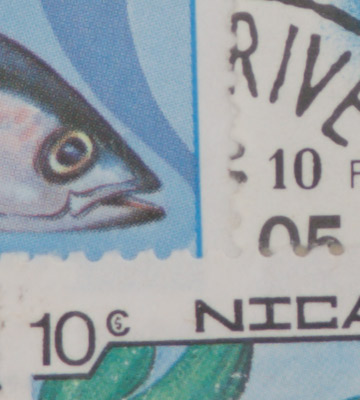 | � �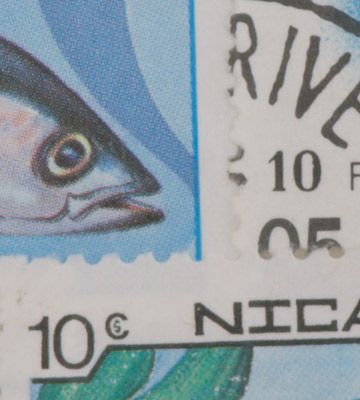 | �
�
At f/5.6, the 300 f/2.8 image quality drops, even though it is still usable; with the 300 f/4 + 2x this aperture is not available. At f/8 and f/11, the 300 f/2.8 shows more detail and contrast, even though the difference is not huge. Other than that, the 2.8 has less chromatic aberration.
Macro capabilities
����| �Canon 300 f/4 | � �Canon 300 f/2.8 |
�
�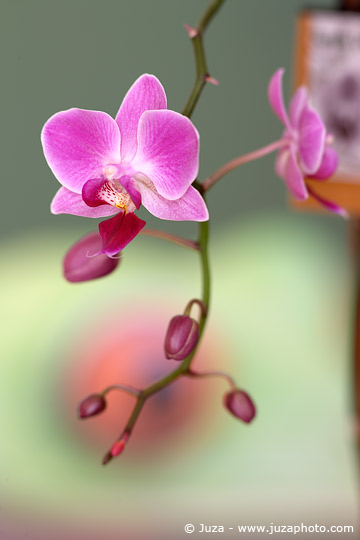 | � �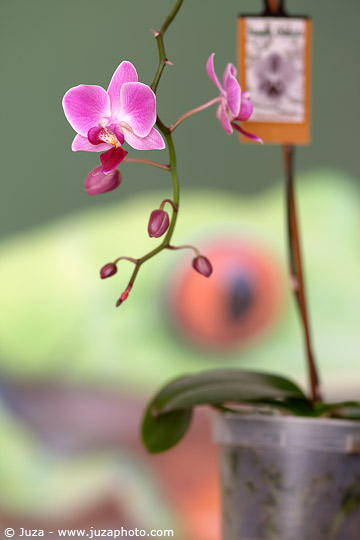 | �
�
This is a test photo of my small Phalaenopsis orchid, with a big print of the tree frog into background. The difference between the 1:4 macro ratio of the 300 f/4 and the 1:8 macro ratio of the 300 f/2.8 is huge - the 300 f/4 focusses much closer, so you can get much more magnification.
If you want a telephoto lens with "near macro" capabilities, the 300 f/4 is a better choice than its big brother.
Conclusions
If you are looking for the very best image quality, there are no doubts that the 300 f/2.8 is the winner; other than that, being 1 stop brighter may be a bit advantage in low light, or with prosumer SLRs that focus only up to f/5.6. That said, the 300 f/4 performs admirably for its price - it cost a fraction of the 2.8, but it gets quite close in terms of image quality and it has even a much shorter minimum focussing distance, that gives better macro capability.
In conclusion, even though personally I have preferred the 2.8 for its image quality and aperture, if your budget is limited you won't regret the 300 f/4: it is a truly excellet lens for its price, with an image quality close to the IQ of professional superteles.



















 JuzaPhoto contains affiliate links from Amazon and Ebay and JuzaPhoto earn a commission in case of purchase through affiliate links.
JuzaPhoto contains affiliate links from Amazon and Ebay and JuzaPhoto earn a commission in case of purchase through affiliate links.